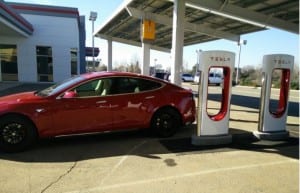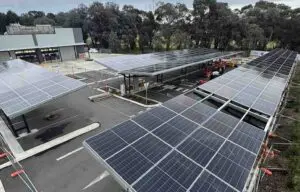It seems appropriate and somewhat ironic to start with a quote from Vladimir Lenin: “There are decades when nothing happens, and there are weeks when decades happen.”
That certainly was true of the week gone by. I wrote a blog last week on why and how We need to Rewire Europe. This week I must address how Europe can survive without Russian gas next winter.
The good news is it possible, the bad news is that it will be very expensive and highly disruptive.
As it stands, Russia supplies some on average 1,600TWh of gas per year to Europe which represents 40% of Europe’s needs. There is probably about 300TWh in storage in Europe right now meaning we need to find 1,300TWh over the next 12 months. How can we do it?
1. Import lots of LNG
The global LNG market is around 5,400TWh per annum, but the bulk of that capacity has already been bought, under long term contract, by countries like South Korea and Japan. The good news is the US can produce more gas and with many new LNG ships on the waters and an expanded Cheniere export terminal opening as I write the US may be able to supply 430TWh this year up from 230TWh in 2021. That is the first 200TWh.
2. Increase pipeline imports
The only real possibilities here are from North Africa and Azerbaijan, noting that there has, in recent years, been spare capacity on the connecting pipelines. A possible extra 200TWh could flow here.
3. Substitute gas with all other forms of generation
Europe used about 900TWh of gas for electricity generation last year. This can be in most countries be substituted by other fossil fuels such as oil and coal and cleaner resources such as nuclear and renewables. It will be critical to keep nuclear and coal plants on noting that German nuclear plants which are due to close by end of this year produced 65TWh of power last year.
The other critical thing is to build as much renewable capacity as possible this year which would mean bringing in emergency legislation to allow quicker regulatory approvals. Europe needs to invest significantly in flexibility measures such as energy storage and enable the use of electric vehicles as grid resources, all of which will impact the need for gas peakers on the power system. These combined measures could give us ad additional 400TWh.
4. Increase European gas production
A decade ago, Europe produced as much as 120TWh on average per month of gas, but by 2021, it was down to 40TWh. The major question mark here is over the Groningen field in the Netherlands, the largest gas field in Europe for many years, which is due to close this year. Technically, more gas can be extracted from the field, but there is a Dutch government moratorium because of tremors caused by drilling. The good news is that UK and Norwegian production should increase following COVID related production weakness which should see European production increase by 10TWh per month which would give us Europe an extra 100TWh this year.
5. Engage with retail consumers
Customers need to be informed of the enormity of the challenge in front of all Europeans and be asked to immediately engage in both energy and cost saving measures. One simple fact is that every one-degree reduction in temperature in buildings gains about 97TWh of gas.
Putting on a pullover at home would allow Europe to thus gain 200TWh. You could argue that price increases by themselves might force these changes but better still would be to explain the situation and ask people to do so of their own volition. In addition, incentives could be put in place to push energy efficiency measures such as better insulation and heat pumps as a replacement for gas boilers.
6. Reduce demand by industry
We have already seen production stoppages in Europe at production facilities such as fertiliser plants which are highly sensitive to natural gas prices. Going forward, with a $15 difference between US and European natural gas and no end in sight businesses will naturally shut production.
Beyond such curtailments, non-critical industries will also need to be incentivized or forced to close production, noting that industry represents 20% of demand for natural gas. A 200TWh saving may be possible with such measures.
On paper it is thus possible to quickly move away from Russian gas but there are other obstacles to executing on this plan:
Higher energy prices
We are seeing unprecedented volatility in oil, coal, gas and electricity markets which is a reflection of the high level of risk around energy. These prices will lead to higher retail energy prices which will have an impact on the cost of living of all European citizens and the competitiveness of many businesses. Practically, governments will need to help people and vulnerable commercial and industrial customers through this crisis. Engaging with them early is a key to being prepared.
Europe’s gas infrastructure
Most of the European gas infrastructure was designed with a view to transport gas from east to central Europe. The issue now is that much of the needed gas infrastructure is not in place to transport gas from west Europe (Iberia) where most of the LNG terminals with spare capacity are situated to central and Eastern Europe.
In addition, if individual countries decide to overbuy to make sure they have enough gas then it could well be that other countries do not have enough. The key is to make sure there is strong cross border co-operation. The issue is that the EU has a very slow and cumbersome decision-making process.
Stress in markets
We have already seen energy companies like Uniper under liquidity pressure due to market volatility which resulted in them needing to secure a credit facility of €10bn from Fortum and the German state bank, the KfW.
The volatility is now higher than it was before Christmas when they secured that facility which is making it a very difficult environment for all energy companies to operate in. It is critical that emergency loan facilities are put in place to prevent bankruptcies and further disruption. In addition, natural gas buyers need governmental guidance around their long-term ‘take or pay’ agreements with Gazprom which force them to pay even if they do not take delivery of the gas.
Sources: Bloomberg, IEA, Fraunhofer ISE
Finally, just to remind you all that I am publishing twice a month a podcast Redefining Energy with my good friend Laurent Segalen which you can find on Spotify or Apple Podcast.
The latest one is on the Ukrainian-Russian crisis, and we have also decided to do a very short weekly one called Redefining Energy Minutes which can be downloaded on Spotify or Apple Podcast.
Gerard Reid is a co-founder and partner of Alexa Capital, and a leading authority on the changes going on across the worlds of energy and mobility.











